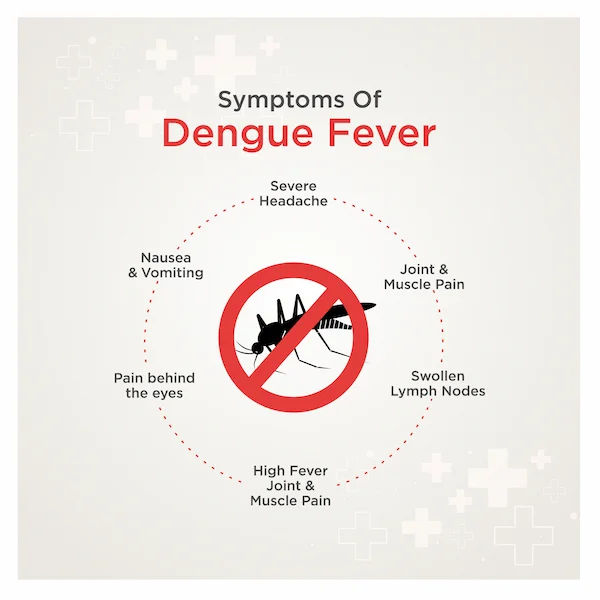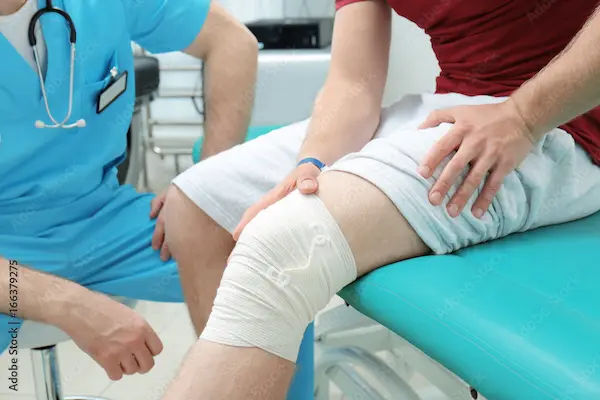Guide to Tips Healthy Back
Discover practical tips for back health, from posture and safe lifting to core exercises, sleep habits, and stress management. Learn when to seek professional care.

Written by Dr. M L Ezhilarasan
Reviewed by Dr. Shaik Abdul Kalam MD (Physician)
Last updated on 26th Sep, 2025

Introduction
Back pain is one of the most common health complaints worldwide, affecting people of all ages and lifestyles. Whether it is a dull, constant ache or a sudden, sharp stab, back discomfort can significantly affect your quality of life. The good news is that most back pain is preventable and manageable. This comprehensive guide goes beyond basic stretches to give you a clear understanding of your back and practical strategies to keep it strong, flexible, and pain-free for years to come. We will explore daily habits, effective exercises, overlooked lifestyle factors, and when it is crucial to seek professional medical advice.
Understanding Your Back: The Architecture of Support
To effectively care for your back, it helps to understand what you are caring for. Your back is a complex structure of bones, muscles, nerves, and connective tissues working together in harmony.
The Spinal Column: More Than Just Bones
Your spine is a remarkable structure. It is made up of 33 individual bones called vertebrae, separated by soft, gel-like cushions called intervertebral discs. These discs act as shock absorbers, preventing the bones from rubbing against each other. The spine’s natural S-curve is vital for balance, weight distribution, and a wide range of movement. When this alignment is disturbed through poor posture, the whole system is put under stress.
The Core Muscles: Your Body's Natural Corset
Your core muscles act like a strong corset around your midsection—abdominals in the front, obliques on the sides, and muscles along your spine and pelvis. A strong core stabilises your spine, much like a foundation stabilises a house. Weak core muscles leave your spine carrying more load, causing instability and pain. Core strength is not only about appearance—it is essential for preventing injuries.
Consult Top Doctors for Your Symptoms
Daily Habits for a Strong, Pain-Free Back
Prevention is better than cure. Small adjustments to your daily routine can make a big difference in back health.
A. Mastering Posture: From Your Desk to Your Drive
Poor posture is one of the leading causes of back pain. The aim is to maintain the spine’s natural curves.
1. Ergonomic Workspace Setup for Back Health
If you work at a desk, your setup is critical. Ensure your feet rest flat on the floor or on a footrest, with knees at or just below hip level. Your chair should provide lumbar support for the lower back curve. Keep your monitor at eye level, about an arm’s length away, to avoid hunching forward.
2. The Right Way to Sit and Stand
Avoid staying in one position for long periods. When sitting, keep shoulders relaxed and your back straight against the chair. When standing, distribute weight evenly on both feet with a slight bend in your knees. A quick posture check, gently pulling your head and shoulders back, helps maintain good alignment.
B. The Art of Safe Lifting: Protecting Your Spine
Improper lifting is a common cause of back injury. Do not bend from the waist. Instead, squat by bending hips and
knees, keep the object close to your body, and lift by straightening your legs. Avoid twisting your torso while holding heavy objects.
C. Sleep Smart: How Your Mattress and Position Matter
Sleep takes up about a third of your life, so your sleeping environment is important. A mattress that is too soft or too hard can misalign your spine. The best position is lying on your side with a pillow between your knees to keep hips and spine aligned. If you sleep on your back, a pillow under the knees helps maintain the natural lower back curve.
Exercise & Movement: The Cornerstone of Back Health
A sedentary lifestyle raises the risk of back pain. Regular, targeted movement is essential.
1. Strengthening Your Core: Key Exercises for Support
Core exercises should engage the whole midsection. Effective options include:
- Bridges: Lie on your back with bent knees, lift hips until your body forms a straight line from shoulders to knees.
- Bird-Dog: On hands and knees, extend one arm forward and the opposite leg back, keeping your back straight. Switch sides.
- Planks: Hold your body in a straight line, supported on forearms and toes.
2. Flexibility and Stretching: Maintaining Range of Motion
Tight hamstrings and hips can strain the lower back. Stretches like knee-to-chest, piriformis (hips), and cat-cow help maintain flexibility.
3. Low-Impact Cardio: Boosting Blood Flow to the Back
Activities such as walking, swimming, or using an elliptical improve blood flow, deliver nutrients, and aid healing. Aim for 30 minutes of low-impact cardio on most days.
Lifestyle Factors You Might Not Have Considered
Sometimes back discomfort stems from less obvious causes.
1. Nutrition and Hydration: Fueling Your Spinal Health
Intervertebral discs are largely made of water, and dehydration reduces their ability to absorb shock. A diet rich in anti-inflammatory foods such as fruit, vegetables, and omega-3s, along with enough calcium and Vitamin D, supports spinal and bone health. If you are unsure about your nutrient levels, Apollo24|7 offers convenient home collection for vitamin and other health tests.
2. Stress Management: The Link Between Tension and Pain
Stress often shows up as tense muscles in the back, neck, and shoulders. Ongoing stress creates a cycle of tension and pain. Mindfulness, deep breathing, yoga, or simply walking can help reduce stress-related back pain.
When to Seek Professional Help for Back Pain
Most back pain improves with self-care, but certain signs need medical attention. Seek help if you have:
- Pain lasting more than a few weeks.
- Severe pain that does not improve with rest.
- Pain, numbness, or tingling spreading down one or both legs.
- Back pain with fever, weight loss, or loss of bladder or bowel control (seek urgent care).
If your condition does not improve with these methods, book a consultation with a doctor through Apollo24|7 for
proper evaluation and treatment.
Conclusion: Your Back Health is a Lifelong Journey
A healthy back depends on consistent, mindful habits. It is not about one perfect posture or a week of exercise but about weaving good practices into your everyday routine. By understanding the structure of your back, building strength, and responding to its signals, you can greatly reduce the risk of pain and injury. Begin with one or two manageable changes and build from there. Your back is the pillar of your body; caring for it is an investment in long-term mobility and well-being.
Consult Top Orthopaedicians
Consult Top Orthopaedicians

Dr. Anil Pradeep Jadhav
Orthopaedician
23 Years • MBBS MS (Ortho)
Nashik
Apollo Hospitals Nashik, Nashik
(25+ Patients)
Dr. Anil Sharma
Orthopaedician
42 Years • MBBS, MS Orthopedics
New Delhi
AAKASH MEDSQUARE, New Delhi

Dr. Pradeep Lucas
Orthopaedician
7 Years • MBBS, Diploma in Orthopaedics, Fellowship in DFSI
Bengaluru
Revival Multispeciality Clinic, Bengaluru

Dr. Manoj Dinkar
Orthopaedician
15 Years • MBBS, Dip (Orthopaedics)
New Delhi
THE DOCTORS NESST, New Delhi

Dr. Mriganka Ghosh
Orthopaedician
11 Years • MD (Physician), DNB (Orthopaedics)
Howrah
Dr Mriganka Mouli Ghosh, Howrah
Consult Top Doctors for Your Symptoms

Dr. Anil Pradeep Jadhav
Orthopaedician
23 Years • MBBS MS (Ortho)
Nashik
Apollo Hospitals Nashik, Nashik
(25+ Patients)
Dr. Anil Sharma
Orthopaedician
42 Years • MBBS, MS Orthopedics
New Delhi
AAKASH MEDSQUARE, New Delhi

Dr. Pradeep Lucas
Orthopaedician
7 Years • MBBS, Diploma in Orthopaedics, Fellowship in DFSI
Bengaluru
Revival Multispeciality Clinic, Bengaluru

Dr. Manoj Dinkar
Orthopaedician
15 Years • MBBS, Dip (Orthopaedics)
New Delhi
THE DOCTORS NESST, New Delhi

Dr. Mriganka Ghosh
Orthopaedician
11 Years • MD (Physician), DNB (Orthopaedics)
Howrah
Dr Mriganka Mouli Ghosh, Howrah
More articles from Preventive Treatment
Frequently Asked Questions
Q1. What is the single best exercise for lower back pain?
There is no universal answer, as it depends on the cause. Walking and stretches such as knee-to-chest are generally safe for most people. If symptoms last longer than two weeks, consult a doctor online with Apollo24|7 for tailored advice.
Q2. Is a firm mattress always better for back pain?
Not always. A medium-firm mattress is usually best as it balances support and comfort. It should contour to your body while keeping the spine aligned.
Q3. Can being overweight cause back pain?
Yes, extra weight, particularly around the stomach, shifts your centre of gravity and strains lower back muscles. Maintaining a healthy weight reduces this risk.
Q4. I have a desk job. What is the most important thing I can do?
Break up long periods of sitting. Stand, stretch, and walk for a minute or two every half hour. Also ensure your workspace is set up ergonomically.
Q5. When is back pain a sign of something serious?
Seek immediate medical help if you experience back pain with loss of bladder or bowel control, numbness in the groin, severe leg weakness, or after a major trauma.




